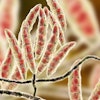
Kansas State research shows popular means of fighting ASF may prevent animal feed from spreading it
Recent research from Kansas State University indicates some of the most popular theories on eradicating African swine fever (ASF) virus from animal feed may hold merit.
The study, published in the journal Transboundary and Emerging Diseases, shows that storing feed ingredients for at least 21 days at ambient temperatures degraded the ASF virus to an extent that it was no longer capable of infecting pigs. Increasing the temperature at which the feed is held to at least 95 degrees Fahrenheit reduced the holding time to seven days, according to the report.
Three additives believed to help prevent the spread of ASF in animal feed — one containing formaldehyde and two others formulated with medium-chain fatty acids — were also found to reduce the infectiousness of the virus. Feed treated with any of the three additives was no longer infectious within two days of the virus’s introduction into feedstuffs by researchers — even at temperatures as low as 40 degrees Fahrenheit, where the virus persisted in untreated feed ingredients for at least 112 days.
“So in the real world, if you are importing feed ingredients in winter in Minnesota and your storage is at a cooler temperature, those circumstances may benefit more from a feed additive, as opposed to summertime in a southern state where the storage facility could easily run at a hotter temperature,” said Megan Niederwerder, an assistant professor in the Kansas State University College of Veterinary Medicine.
Previous research by Niederwerder and her team demonstrated that the ASF virus was capable of surviving in animal feed ingredients — especially soybean meal — long enough to remain infectious in pigs after a transoceanic voyage. But the conditions on such a trip, with the fluctuations in temperature and humidity that occur at sea, provide a favorable environment for the virus. This new research, Niederwerder said, demonstrates that storing feed ingredients at higher temperatures, or introducing a mitigant at lower temperatures, could help prevent the spread of the disease via animal feed.
Higher temperatures likely increase the rate of viral decay, Niederwerder explained, while the mitigants have various modes of action on the virus. However, while multiple methods tested during the trial degraded the virus to such an extent that it could no longer infect pigs, traces of ASF DNA were still present at the end of the yearlong study in nearly all the combinations tested. Finished feed products treated with the formaldehyde additive, and the corn cob shipping materials, were the only two exceptions in which the ASF DNA was completely eradicated during the study.
“Based on this study, the ASF DNA does not decay substantially over time at any temperature, so you would anticipate that the presence of DNA could be maintained after storage” and could trigger a test result confirming the presence of the virus, Niederwerder said, even if the virus is no longer infectious.
Niederwerder said future research would look at heating feed to temperatures such as 150-160 Fahrenheit during the production process, to determine if processing feed at high temperatures may be effective at eradicating the virus in a shorter time frame.

















